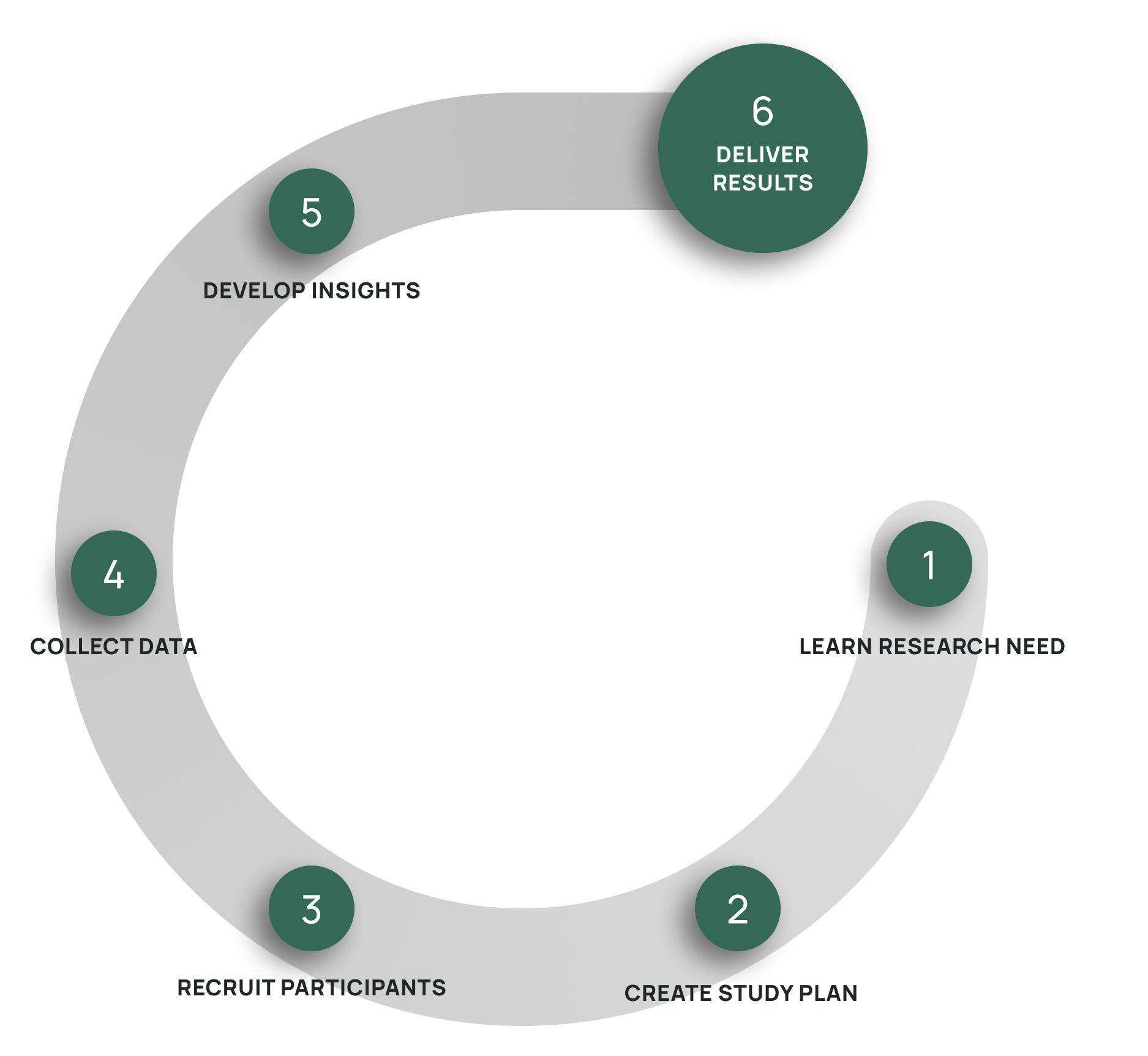My Process
Whether I’m running research initiatives independently or responsible for only a part of the project, I follow the same general process and ethos.
Research is valuable at every stage of the design process, and can easily be scaled up or down depending on need.
Research Process
These six steps represent a generalized overview of my process:
-
Stakeholder interviews: ascertain project background & priority level
Source relevant prior research or literature
Identify problem statement
Develop research question(s) based on stakeholder goals, resources and timelines
-
Choose method(s) based on research goals, resources, timelines, and development stage of product
Define metrics
Author & share a plan articulating team, background, problem, methods, timeline, participants, scripts and tools
-
Can be done directly, through in-house coordination, or via third party partners
Number of participants will depend on the methods of the study with respect to marginal returns
Goal is to encompass the broadest sample within the target segments
Diverse age, gender, geographic location, ethnicity and ableism creates strong breadth
-
Objective, non-leading language
Collaborate with stakeholders when appropriate
Note taking and review/ debreif
Manage schedules
Keep data organized for later analysis
-
Clean, analyze, synthesize data
Observe or evolve pre-established metrics
Thematic coding, affinity maps, user journeys
-
Visualize findings
Translate data themes into actionable recommendations
Speak to outcome metrics
Guide next steps and future research
Design Process
Here’s a snapshot of how UX Research benefits each phase of the double-diamond design process.
Why UXR?
UXR offers different benefits depending on the size and goals of your organization. It can help to align teams, providing direction and guidance that comes from user data. For a leaner team that moves fast, it gives real time feedback to inform design iteratively and validate performance. Insights can be uncovered rapidly and are actionable and impactful.
1
Insight into how user groups think, feel, and behave so your product development can center around the people you're trying to reach. Validated data is more valuable than thinking you represent your users.
2
Opportunity to co-create with your user base. This opens the door to more innovation and better market fit.
Works as cost effective risk management and a helpful decision making aid.
3
Provide metrics to understand not only how your product or aspects of it are doing, but also why they are performing the way they are.
UXR is easy to scale up or down depending on business need.
Let’s work together.
Interested in working together? Fill out some info and I will be in touch shortly! I can't wait to hear from you!

